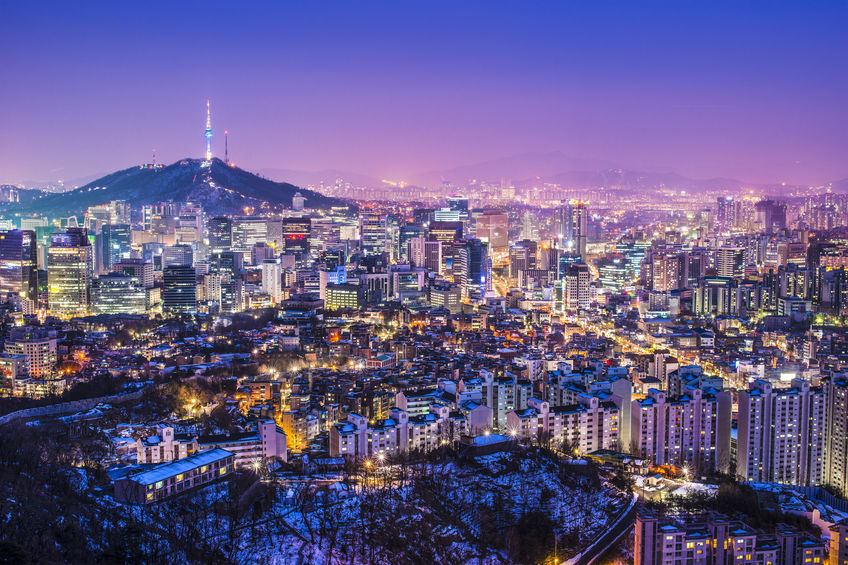Smart cities around the world: Seoul
4 June 2021
Explore Seoul's ambitious smart city projects! See how the metaverse, digital twin, and data-driven transport system are shaping a smarter, citizen-centric future.

Like Singapore, Seoul is tackling the challenges of rapid urbanisation, an ageing population, and climate resilience with digital innovation. The "Land of the Morning Calm" often competes with Singapore and Tokyo for the top spot when it comes to smart cities in Asia.
With a population of approximately 9.6 million people in 2024, South Korea’s capital has cemented its reputation through a series of ambitious projects and a forward-thinking vision. This reputation is backed by its strong position in international rankings and a national commitment to innovation.
The city’s overarching vision is "Seoul, Leading the Future of Digital Transformation as a Global Smart City," and it’s backed by significant national investment in strategic initiatives like AI.
Beyond its cameos in blockbuster films like Marvels’ Avengers, Seoul’s real transformation is happening in its streets, services, and digital platforms. Let’s see what innovative projects they have going on there!
Overarching strategy: Smart Seoul Vision 2030
Seoul’s smart city strategy is not a scattergun approach; it’s guided by the ambitious Seoul Vision 2030. This long-term plan sets a clear direction for the city’s digital transformation, focusing on building a more sustainable, citizen-centric, and data-driven urban environment. The key strategic directions of Smart Seoul 2030 include:
Data-driven administrative innovation: Leveraging big data and AI for evidence-based policy-making to create a more responsive and efficient government.
Hyper-connected urban infrastructure: Expanding public Wi-Fi, 5G networks, and IoT sensors to create a seamless, interconnected urban experience.
Citizen-centric smart services: Providing personalised and inclusive services that cater to the diverse needs of all citizens.
Sustainable and safe city: Using technology for proactive environmental protection and intelligent disaster management to build a more resilient city.
Global smart city leader: Actively sharing Seoul's expertise and fostering global innovation and partnerships.
Latest smart city projects
From virtual worlds to intelligent urban management, Seoul is home to some of the most innovative projects in the world.
Metaverse Seoul
In a major step for municipal digital services, Seoul became one of the first smart cities to launch a government-led metaverse initiative. With an initial investment of approximately US$5.2 million, this project aims to create a fully virtual replica of the city by 2026.
Phase 1, launched in January 2023, is just the beginning of a plan to replicate major city services—including culture, tourism, and education—in an immersive virtual environment. This project allows citizens to engage with city services in an entirely new way, highlighting the city's commitment to pushing the boundaries of digital engagement.
Digital Mayor’s Office (DMO)
Seoul’s smart city project also includes the Digital Mayor's Office, an AI-powered citizen service platform designed to enhance administrative efficiency and transparency. This platform provides 24/7 automated responses to citizen queries, significantly reducing response times. The DMO serves as a central hub for city management, integrating real-time data to help city leaders make rapid, evidence-based decisions, particularly in times of crisis.
Digital twin: Urban planning and simulation
A major technological advancement and a key part of the smart city project, the Digital Twin Seoul, or "S-Map," is a dynamic 3D replica of the entire city. This twin integrates real-time data from a vast network of IoT sensors, CCTV cameras, and drones, making it a powerful tool for urban planning and simulation.
The purpose of this project is to address complex urban problems with scientific and objective analysis. For instance, the S-Map is used for simulating wind paths to reduce fine dust and heat island effects, planning the layout of buildings, and even preventing the spread of forest fires. This allows city planners to conduct in-depth simulations before making physical changes to the city.
Smart transportation with big data: Owl Bus
The “Owl Bus” is a great case study on how the smart city leverages technology to solve social problems. Seoul is a sprawling metropolis, and getting home after hours can be a challenge for late-night workers, especially those living in the more affordable outskirts. Taxis are often expensive, and drivers can be unwilling to take long-distance fares.
The Owl Bus was created as a night-time public transport service for these late-night workers.
The interesting part? City officials decided to use big data to plan the routes.
By analysing three billion data points from the location of late-night calls and text messages, they were able to pinpoint the specific departure and destination locations of travellers. This data-driven approach allowed them to design nine efficient late-night bus routes that directly served the needs of citizens.
Other smart transportation initiatives
Seoul is also pushing the boundaries with a number of other smart transport initiatives. The city has established autonomous vehicle testing zones in districts like Gangnam and Seocho, paving the way for a driverless future.
Furthermore, a comprehensive Bus Information System provides real-time tracking for over 7,000 buses, while AI-controlled traffic lights are being implemented to optimise traffic flow and reduce congestion.
Smart Seoul platforms (6S)
At the heart of Seoul’s smart city operations is the Smart Seoul Platform (6S)— six building blocks that power everything from real-time environmental monitoring to AI-driven citizen services.
S-Dot (Citywide data sensors)
The S-Dot sensor network is a citywide system of over 300 IoT sensors that collects crucial urban data, including air quality, temperature, and humidity. This data is essential for proactive environmental monitoring and policy-making.
S-Data (Big data integration)
The S-Data pillar is responsible for the collection, integration, and analysis of vast amounts of big data from various sources. This central data hub is critical for evidence-based decision-making across all city services.
S-Map (3D digital twin)
As the city's dynamic 3D twin, S-Map provides a virtual replica of Seoul, integrating real-time data and allowing for advanced urban simulations, as seen in the Digital Twin Seoul project.
S-Brain (AI chatbot and analytics)
S-Brain serves as the city's AI-powered analytical tool and chatbot service. It provides intelligent insights from data and offers automated, personalised responses to citizen queries, making government services more accessible and efficient.
S-Security (Smart security)
S-Security is the core security system of Seoul’s smart city platform, using advanced technology to enhance public safety. It integrates data from a variety of sources to improve disaster management and ensure the well-being of citizens.
S-Net (Network infrastructure)
The S-Net initiative focuses on building and expanding the city's hyper-connected network infrastructure. It includes the rollout of public Wi-Fi and IoT networks across the city, bridging the digital divide and ensuring equal access to information for all residents.
Smart elder care with IoT technology
One thing that Singapore and South Korea have in common is an ageing population. In 2024, the elderly accounted for 20% of the total population in South Korea (vs Singapore’s 18%).
Looking after the elderly has its challenges, but Seoul hopes that by bringing technology into homes, care services can be provided in a more efficient and timely manner.
The city does this through IoT solutions that detect human movement, temperature, humidity, and brightness. The data collected by these sensors is sent to several care service centres for real-time monitoring. If no movement is detected for a prolonged period, caregivers are alerted to make a call or a house visit. This proactive approach ensures the safety and well-being of elderly residents who may be living alone.
Seoul Smart City Prize 2025
In its role as a global leader, Seoul plays an active role in international collaboration through the Seoul Smart City Prize. This annual prize is designed to recognise and promote inclusive, people-centred urban solutions from around the world.
The 2025 prize, with its categories of "Tech-InnovaCity" and "Human-CentriCity," highlights the importance of both technological advancement and digital inclusion in creating a truly smart city. This initiative, along with events like Smart Life Week, showcases innovation and fosters global partnerships, positioning Seoul at the forefront of the international smart city movement.
Future smart city trends (2024-2028)
South Korea's forward-looking approach is outlined in the "4th Smart City Comprehensive Plan (2024–2028)." The plan highlights several overarching directions for the future of the country:
Facilitating "connected cities and people" by expanding distributed data hubs for urban management and climate resilience.
Mandating at least 35% of public funding for digital and inclusive urban investments.
Upgrading digital twin technologies and data standards to enhance real-time management and disaster response.
Implementing regulatory sandboxes and incentive programmes for corporate and startup innovation in smart city applications.
The secret behind Seoul’s success
The success of Seoul’s smart city efforts can be attributed to several key factors:
First, there is a strong political will and consistent support from across government administrations.
Second, every smart city project is designed with a citizen-centric approach, integrating user feedback to ensure solutions are truly people-oriented.
Third, robust public-private partnerships with leading tech giants are essential for innovation.
Finally, an agile implementation strategy, with rapid prototyping and iterative development, ensures that the city can quickly adapt to changing needs.
Seoul proves that with vision, innovation, and citizen-first design, a city can become not just smarter, but more human. And that’s a future all smart nations can strive for.
Explore other articles in this smart cities series:
Connect with us!

Subscribe to the TechNews email newsletter

